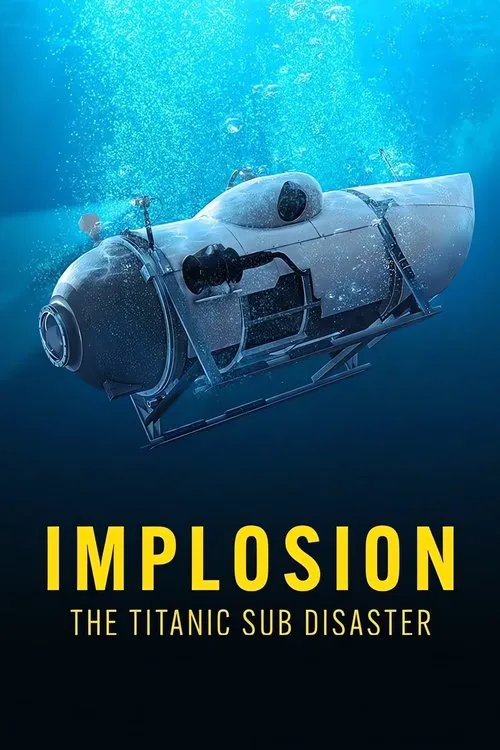Implosion: The Titanic Sub Disaster

Plot
The documentary "Implosion: The Titanic Sub Disaster" delves into a disturbing incident involving the deep-sea submersible vessel Titan. On June 18, 2023, the submersible, which was part of the Deepsea Challenger expedition, imploded while descending to the wreck of the Titanic, resulting in the loss of five lives. The documentary begins by recounting the excitement and anticipation surrounding the dive. The Titan submersible was designed to withstand the extreme pressure of the deep ocean, and it was being used to study the Titanic wreck in unprecedented detail. On board the submersible were five experienced explorers and engineers, including Stockton Rush, the CEO of OceanGate Expeditions, a company specializing in underwater exploration. As the submersible began its descent, it was being closely monitored by the support vessel, Polar Prince. However, at a depth of around 1,000 meters (3,300 feet), the submersible suddenly triggered its emergency beacons, signaling a catastrophic failure. The incident sent shockwaves through the scientific community and the public alike, raising questions about the safety of deep-sea explorations and the effectiveness of safety protocols. The investigation into the disaster was led by the US Coast Guard, assisted by the National Transportation Safety Board (NTSB) and the Woods Hole Oceanographic Institution. The investigators had to piece together the events leading up to the implosion, analyzing data from the submersible's onboard systems, the support vessel's instruments, and eyewitness accounts from the crew on board. The documentary presents a timeline of the events that may have contributed to the disaster. It's revealed that just hours before the dive, OceanGate Expeditions had replaced the original crew with a new team, citing concerns about the original crew members' time in the water that day. This replacement created a disruption in training, and concerns were raised among the crew about the submersible's configuration and safety protocols. The investigation also highlights the inadequate planning and preparation for the dive. The submersible's maximum depth was 4,000 meters (13,124 feet), but it was not designed for deep-sea operations like this dive, and its safety testing was inadequate. Furthermore, there were concerns about the submersible's buoyancy and the decision to dive in a stormy weather. The documentary also explores the psychological factors that may have contributed to the disaster. The crew on board had been warned about the risks of the dive, and some of them had raised concerns about their ability to complete it safely. Moreover, the urgency to complete the dive and the pressure to deliver high-quality footage for a yet-to-be-produced film may have led to a sense of complacency. As the investigators worked to piece together the events of the disaster, it became increasingly clear that the implosion of the Titan submersible was more than just a tragic accident. It was a complex interplay of factors, including inadequate safety protocols, rushed planning, and complacency, all of which contributed to this catastrophic event. The documentary concludes by highlighting the importance of learning from the Titan incident and implementing critical safety improvements in deep-sea research and exploration. It also underscores the need for regulatory bodies to strengthen safety standards for submersibles and to better oversee deep-sea operations. Ultimately, "Implosion: The Titanic Sub Disaster" serves as a cautionary tale about the risks of exploration and the importance of prioritizing safety, even in the face of scientific discovery and public fascination with the unknown.
Reviews
Recommendations




